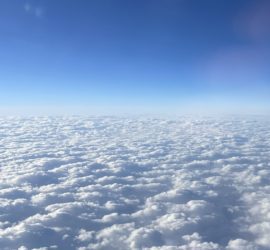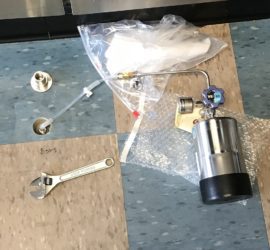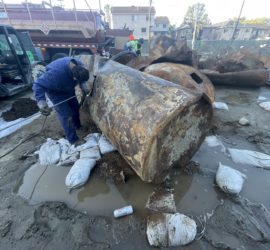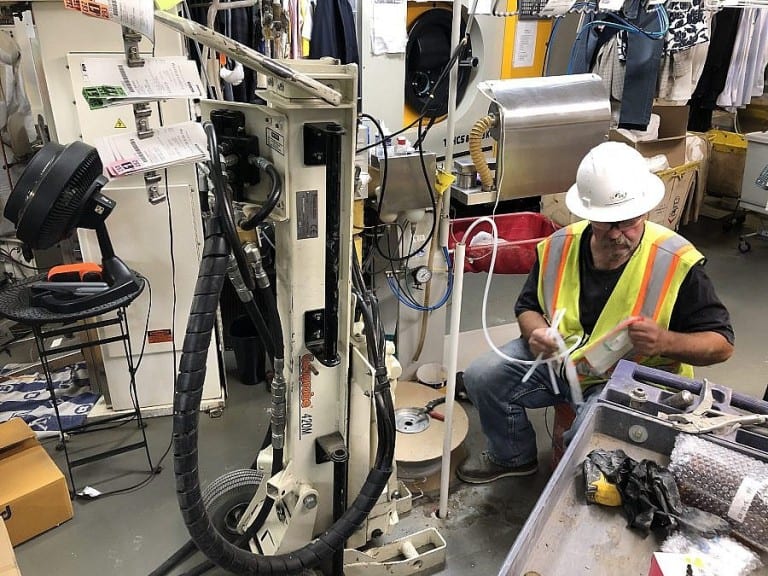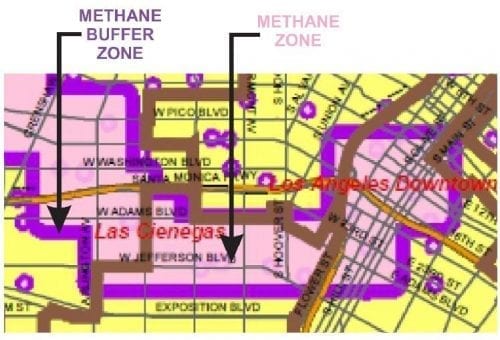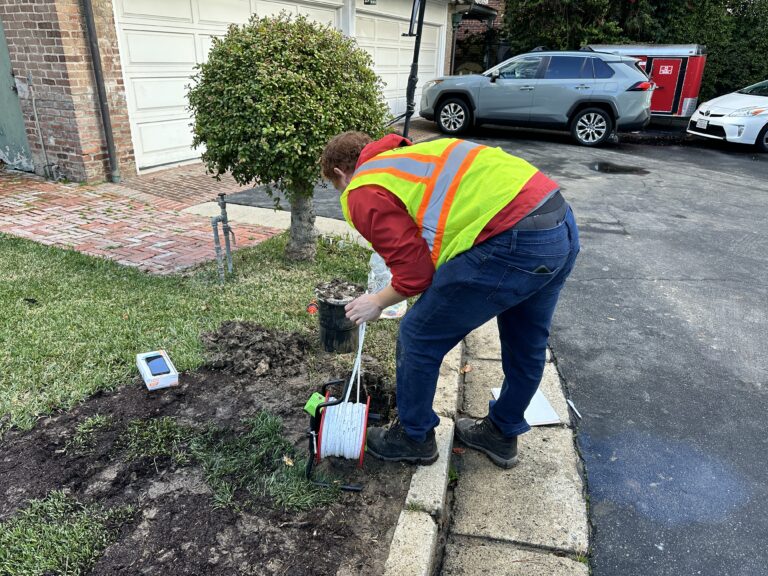AQMD Permit for Rule 1166 & Contaminated Soil Excavation Permit
An AQMD Permit for Rule 1166 is the Air Quality Management District’s regulatory oversight procedure that applies to contaminated soil excavation projects in Southern California. The primary objective is to monitor contamination plumes in the air and soil, during soil removal and remediation efforts. In order to obtain an AQMD Permit for Rule 1166, environmental engineering professionals must prepare a site-specific or various-locations Soil Excavation Management and Mitigation Plan. Additionally, the rule requires air quality testing in the field during excavation, as well as the daily reporting of field observation results. Updated May 6, 2020.
Discovering Contaminated Soil Excavation Issues
Unless a Phase 1 Environmental Site Assessment or Phase 2 Subsurface Investigation preemptively detects soil contamination above screening levels, developers may be surprised to find contaminated soil at a job site. These recognizable environmental concerns come to light from time to time, and sometimes require reporting the results to government regulatory agencies. As a result, there are legal requirements for disposal and monitoring the waste from contaminated soil excavation projects. In fact, agencies prefer that developers retain the appropriate environmental engineering firms to achieve proper soil contamination excavation procedures, as well as the AQMD Permit for AQMD Rule 1166.
Tasks that Require AQMD Rule 1166 Compliance
Per the AQMD Permit application and guidelines for AQMD Rule 1166, compliance is necessary for each of the following contaminated soil excavation activities:
- The removal of any underground storage tank (UST) and fuel product piping. This includes industrial septic tanks and clarifiers.
- Any general excavation within a soil-impact of volatile organic compounds (VOCs), semi-VOCs, petroleum hydrocarbons, heavy metals from grease, and more.
- The stockpiling and movement of soil contamination cuttings and construction debris.
- Any potential exhausting or emittance of vapors from the extraction of soil vapors for subsurface contamination remediation.
- The production of any vapor-phase exhaust due to the treatment of soil or groundwater contamination, on-site, or at a disposal facility.
- And more.
The general listings above are typical scenarios of which an AQMD Rule 1166 Permit may be necessary. However, other circumstances may arise where an AQMD Permit is necessary. Accordingly, there is a need to monitor the air around disturbed soil via an organic vapor analyzer (OVA). Often times a photo-ionization detector (PID) is exemplary. Other times a flame-ionization detector (FID) may be more ideal.
The Soil Contamination Excavation Process
Step 1 – Assess the Soil Contamination Excavation Area
In the first place, the contaminated soil excavation process starts with soil sampling by an environmental consultant. Some of this information may derive from a Phase 2 ESA. Although typically, multiple soil contamination testing events are necessary to define the vertical and lateral extent of pollution.
Step 2 – Prepare a Legal Waste Disposal Profile
Next, the environmental consultant will need to prepare a waste identification profile with the Environmental Protection Agency (EPA). This profile categorizes the waste generator and generation process, as well as the mandatory disposal procedure. Moreover, a transportation manifest provides documentation for the waste soil, as it transfers from the Subject Site, to the disposal facilities.
Step 3 – Prepare a Soil Excavation Management Plan and Rule 1166 AQMD Permit
At this point, the environmental engineering firm of record also prepares a Soil Excavation Management and Mitigation Plan. Some mitigation plans are site-specific, while others are for various locations. Lastly, AQMD permit fees apply, and the SCAQMD must approve the mitigation plan. No excavation work may start without a clear permit, under AQMD Rule 1166.
Step 4 – Cautiously Excavate and Perform Field Air Quality Monitoring
All excavation fieldwork must be in accordance with the site-specific Soil Excavation Management Plan. And a field environmental professional with OSHA HAZWOPER certification must perform air monitoring tests directly within the contaminated soil excavation areas. Air quality observations are qualitative and generally occur by the use of an organic vapor analyzer (OVA), such as a photo-ionization detector (PID), or flame-ionization detector (FID).
Step 5 – Provide Daily Field Data Reports to the AQMD (As Needed)
Per the rules and guidelines of AQMD Rule 1166, constant field monitoring is necessary during the contaminated soil excavation process. This ensures the proper observance of air quality, as well as the well being of the general public. The field technician must submit field monitoring results on a daily basis. Alternatively, this can be on an “as needed” basis, per the specifications of the AQMD Permit. The field technician is also responsible for supervising air quality conditions for worker safety. In fact, field reps can order a shut-down of work if conditions appear to be unsafe. This determination is often on the basis of a threshold level, written directly on the Rule 1166 permit itself.
Step 6 – Close-Out the Permit at the Completion of Fieldwork
The last step of this process is permit-closure. Upon completion of the digging work, the field technician submits the final air quality monitoring data and project notes to the AQMD. And the responsible party is likely to receive an oversight closure confirmation.
Cost of Actual Contaminated Soil Excavation, Sampling & Monitoring
Aside from the AQMD Permit cost itself, there are separate costs for the excavation work, as well as the mandatory sampling and field monitoring. Unfortunately, consultants can’t post a universal fee structure for the fieldwork portion of contamination excavation projects. The prices for this type of work differs on a project-by-project basis because each site is likely to have a unique set of circumstances and volumes of waste. Instead, estimates are available upon reviewing project-specific details (which dictate the overall price of contaminated soil excavation projects). For a proper estimate, contact Geo Forward at (888) 930-6604, or only by a digital consultation request.
Cost of AQMD Permit for Rule 1166
AQMD publishes a fee schedule for Rule 1166 permits. On average, the ADMD Permit direct cost can range from $1,000 to $2,000 (or more) per application. The overall cost of an AQMD Permit for AQMD Rule 1166 depends on whether an expedited application is requested, and other aspects of the job. This price range does not include the professional rates of an environmental consultant to prepare the AQMD Permit application and necessary components.
Finish the Job Right to Save Money on the Long Run
An AQMD Permit and AQMD Rule 1166 compliance is a requirement for contaminated soil excavation projects across California, and other States. Although this process is costly, the fines and penalties for violating them are more. Thus, it’s best to consult a proper environmental engineering firm. Moreover, a Phase 1 Environmental Site Assessment at the purchase stage is the best recommendation for staying one step ahead. If contaminated soil becomes apparent during the assessment, a proper budget can be set.

